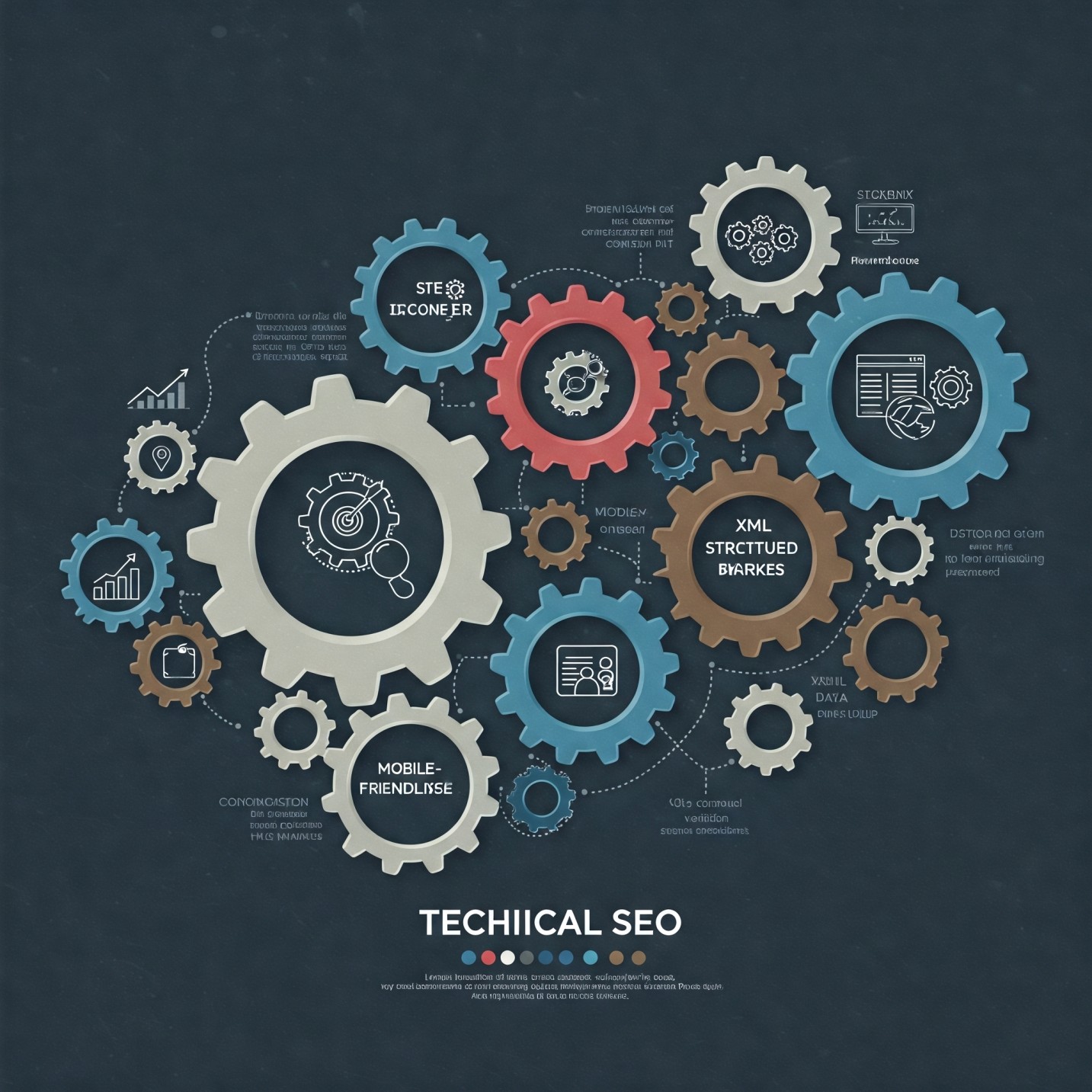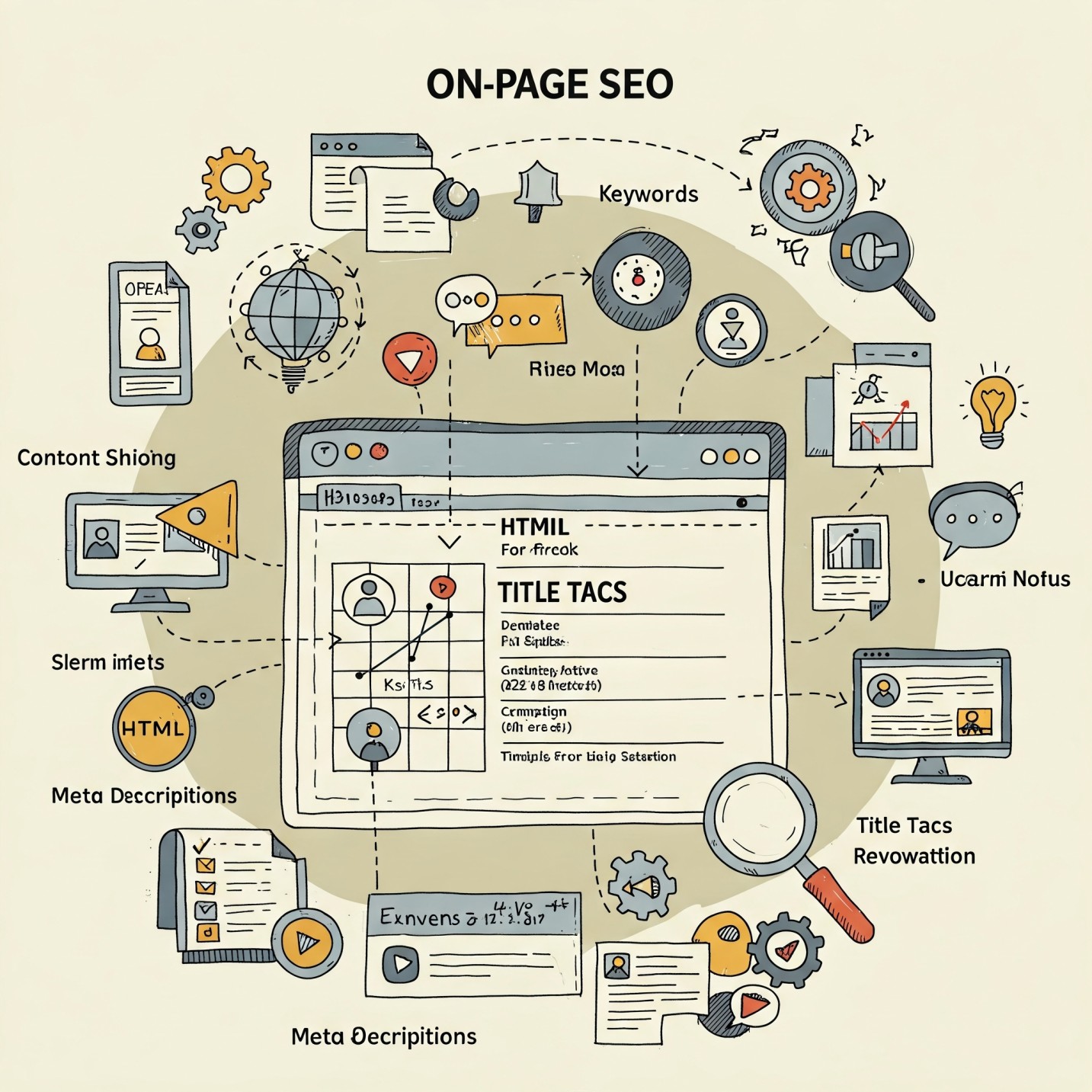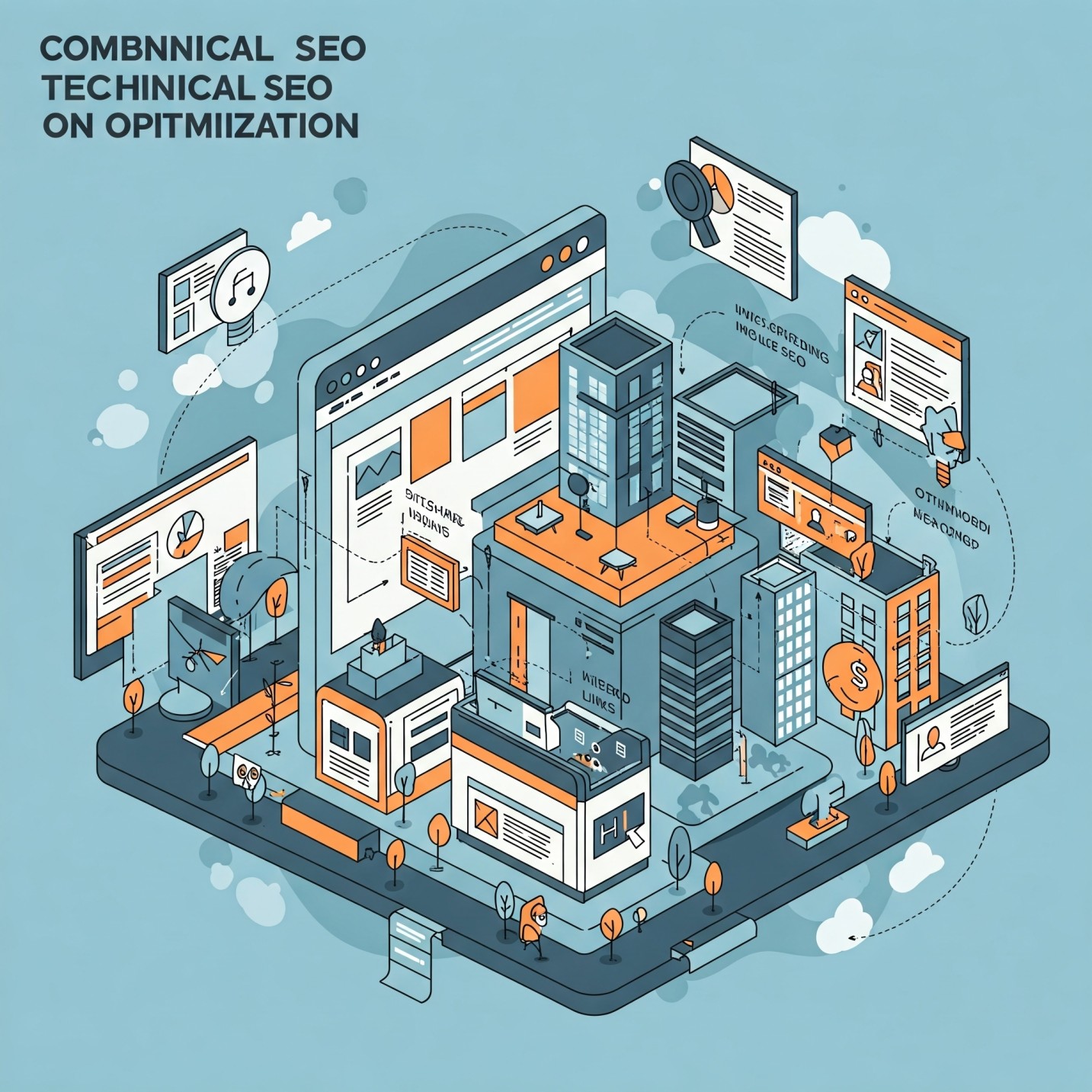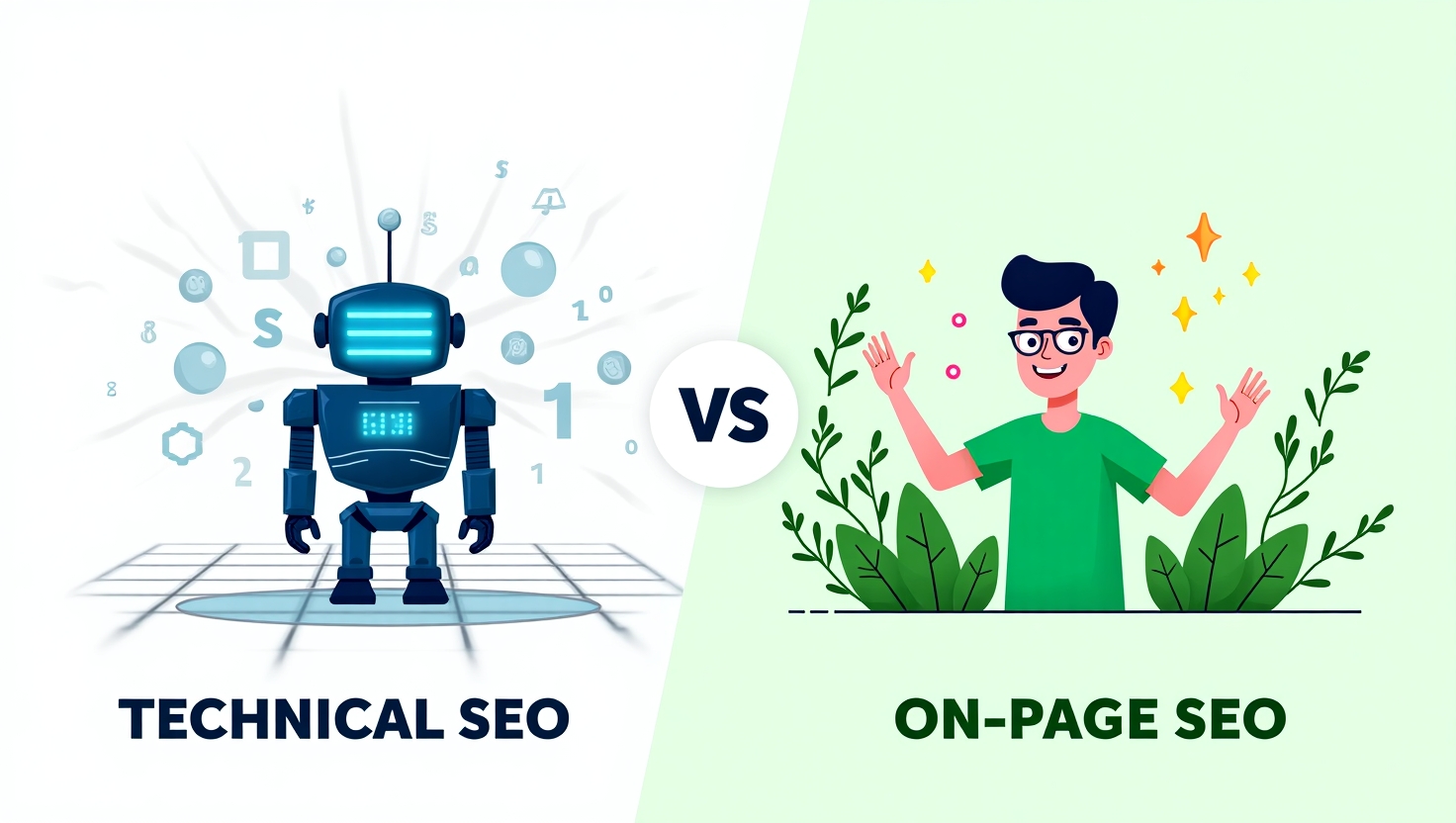Understanding the distinction between technical SEO vs on-page SEO is essential for building a strong digital presence. This guide explores both concepts in detail, how they function independently, and why they must work together to achieve optimal search engine performance.
The Importance of Distinguishing Between Technical and On-Page SEO
Many website owners and marketers invest time and effort into content creation and link-building strategies but fail to see the results they expect. One common reason for this is a lack of understanding or misapplication of two critical components of search engine optimization: Technical SEO and On-page SEO .
While these terms are often used interchangeably, they represent two distinct areas of focus within the broader scope of SEO. Misunderstanding their roles can lead to wasted effort, poor indexing, low visibility, and missed opportunities for growth.
This article will clarify what each term means, outline their core components, and explain how they complement each other in an effective SEO strategy.
What Is SEO?
Search Engine Optimization (SEO) refers to the practice of improving a website so that it ranks higher in organic (non-paid) search engine results. The goal is to increase both the quantity and quality of traffic coming from search engines like Google.
SEO is typically categorized into three main types:
- Technical SEO – Ensures that a website meets the technical requirements needed for efficient crawling and indexing by search engines.
- On-Page SEO – Focuses on optimizing individual web pages to improve relevance and ranking for specific keywords.
- Off-Page SEO – Involves external factors such as backlinks and brand mentions that influence a site’s authority and credibility.
In this article, we’ll examine the first two — technical SEO and on-page SEO — and explore how they contribute to overall search performance.
What Is Technical SEO?

Technical SEO refers to the optimization of a website’s infrastructure to make it easier for search engines to crawl, interpret, and index its content. It is primarily concerned with the backend elements of a website rather than the visible content or design.
Core Components of Technical SEO
- Crawlability: Ensuring that search engine bots can access and navigate your website without encountering errors.
- Indexing: Making sure that important pages are included in search engine databases and excluded if necessary (e.g., duplicate or private content).
- Site Speed: Optimizing loading times to improve user experience and meet search engine performance standards.
- Mobile-Friendliness: Ensuring that the website functions well across all devices, particularly mobile phones and tablets.
- Secure Connection (HTTPS): Using encryption to protect data transferred between the user and the server.
- URL Structure: Creating clean, logical URLs that reflect page content and hierarchy.
- XML Sitemaps: Providing a roadmap of your website’s content to help search engines discover and understand pages more effectively.
- Robots.txt: Managing which parts of the site should or shouldn’t be crawled by search engines.
- Structured Data (Schema Markup): Adding code to help search engines better understand the context and meaning of your content.
Why Technical SEO Matters
Even the most compelling content cannot rank if search engines are unable to access or properly interpret your site. Technical SEO ensures that your website is structured in a way that allows search engines to efficiently process and evaluate your content. Without a solid technical foundation, issues such as crawl errors, slow load times, or improper indexing can prevent your content from being seen at all.
What Is On-Page SEO?

On-page SEO involves optimizing the actual content and HTML elements of individual web pages to improve their relevance and ranking for specific keywords or topics. Unlike technical SEO, which focuses on infrastructure, on-page SEO deals directly with the content users interact with.
Core Components of On-Page SEO
- Keyword Research and Targeting: Identifying relevant keywords and incorporating them naturally into titles, headers, and body text.
- Content Quality and Depth: Creating original, informative, and valuable content that satisfies user intent.
- Title Tags and Meta Descriptions: Writing concise, keyword-rich meta tags that encourage users to click through from search results.
- Header Tags (H1, H2, H3, etc.): Structuring content with clear headings to improve readability and keyword placement.
- Internal Linking: Connecting related pages within your website to enhance navigation and distribute authority.
- Image Optimization: Using descriptive file names and alt text to improve accessibility and image search visibility.
- Page Formatting and Readability: Breaking up text with bullet points, short paragraphs, and multimedia to improve engagement.
Why On-Page SEO Matters
Once a website has been indexed, on-page SEO determines how well individual pages perform for specific queries. Search engines rely on signals such as keyword usage, content depth, and internal linking to assess relevance and quality. Strong on-page SEO ensures that your content not only gets found but also resonates with users, leading to better rankings and improved user behavior metrics.
How Technical SEO and On-Page SEO Differ
How Technical SEO and On-Page SEO Work Together
An effective SEO strategy requires both technical and on-page SEO to function in harmony.
For example:
- If your website loads slowly due to poor technical setup, even high-quality content may struggle to rank because user experience metrics affect search rankings.
- Conversely, if your site is fast and technically sound but your content lacks keyword optimization or fails to address user intent, you may not rank for the right queries despite having excellent infrastructure.
The relationship between the two can be compared to a library:
- Technical SEO is like the catalog system — it helps the librarian (search engine) locate and organize books (web pages).
- On-Page SEO is like the book itself — it determines whether the book answers the reader’s question and deserves to be placed prominently on the shelf.
Together, they ensure that your content is both accessible and relevant.
When to Prioritize Technical SEO vs On-Page SEO

Prioritize Technical SEO When:
- Launching a new website or undergoing a redesign
- Experiencing crawl errors or indexing problems
- Site speed is below recommended thresholds
- Mobile usability issues are impacting user experience
- There are structural problems affecting how search engines interpret your site
Prioritize On-Page SEO When:
- Updating or repurposing existing content
- Publishing new pages targeting specific keywords
- Improving engagement metrics like bounce rate or dwell time
- Enhancing meta descriptions and title tags to increase click-through rates
- Addressing gaps in content depth or keyword coverage
Common Mistakes in Technical and On-Page SEO
Technical SEO Mistakes:
- Ignoring crawl errors reported in Google Search Console
- Having a disorganized URL structure
- Failing to implement schema markup where appropriate
- Not optimizing images or scripts for faster load times
- Poor internal linking architecture
On-Page SEO Mistakes:
- Overstuffing content with keywords unnaturally
- Publishing thin content that doesn’t fully answer user queries
- Skipping meta descriptions or writing ineffective ones
- Neglecting header tag optimization
- Failing to update outdated content
Avoiding these pitfalls ensures that your website is both technically sound and content-rich, positioning it for long-term success in search rankings.
Tools That Support Technical and On-Page SEO
For Technical SEO:
- Google Search Console: Monitor crawl errors, indexing status, and performance metrics.
- Screaming Frog SEO Spider: Audit technical aspects across your site, including links, redirects, and metadata.
- PageSpeed Insights: Analyze and improve page load performance.
- GTmetrix: Detailed performance reports with actionable recommendations.
For On-Page SEO:
- Surfer SEO: Analyzes top-ranking content and provides on-page optimization suggestions.
- Ahrefs / SEMrush: Keyword research and content gap analysis tools.
- Yoast SEO (for WordPress): Provides real-time feedback on readability and SEO best practices.
- Grammarly: Enhances content clarity and grammar.
Using these tools strategically enables you to monitor, optimize, and maintain both the technical and content-related health of your website.
Conclusion: Technical SEO and On-Page SEO Are Equally Important
Both technical SEO and on-page SEO play indispensable roles in achieving high search rankings and driving meaningful traffic.
Technical SEO ensures that your website is accessible, fast, and structured correctly for search engines. On-page SEO ensures that the content you publish is relevant, engaging, and optimized for both users and algorithms.
Neglecting either area can result in missed opportunities, poor user experiences, and suboptimal performance in search results.
To build a truly effective SEO strategy, treat both technical and on-page SEO as complementary disciplines. Regularly audit your site’s technical health, while consistently refining and expanding your content to align with user needs and search trends.
By doing so, you create a robust foundation for long-term digital growth.


